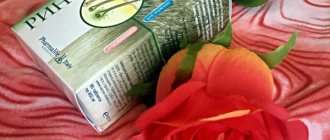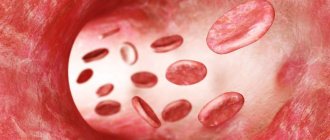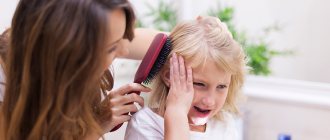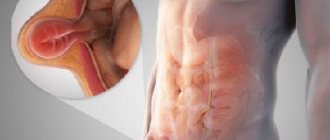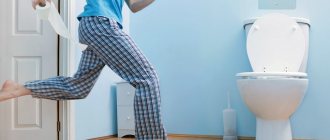Androgenetic alopecia in men is the most common type of baldness. The main symptom of the disease is increased hair loss, first in the frontotemporal part of the head, on the back of the head, and then throughout the entire head, as a result of which a man often loses his hair completely. Until recently, trichologists called the disease male, but now androgenetic alopecia is also diagnosed in women. In this case, they talk about male pattern baldness.
Androgenetic alopecia is difficult to treat. This is so: the doctor develops a comprehensive treatment regimen, the process takes more than one month. Sometimes you have to take medications for life. But if the patient consults a doctor in the early stages of its development, the recovery rate is very high.
Baldness can make people feel worse emotionally, but it is not medically dangerous.
What can you do
Currently, there is no magic product or cream that can completely restore hair. Minoxidil may help in some cases, but not in all.
It is impossible to stop the progression of male pattern baldness, but you can slow down the process with restoratives and good care.
Wash your hair with a mild shampoo, warm water and finally rinse with cool water.
Use a hair brush with soft bristles. Avoid brushing wet hair as the bristles can weaken and damage the hair.
Avoid exposing your hair to hot hair dryers, perms and coloring products.
If baldness develops, you can use false hair. Use products to attach such hair with caution as you may damage your own hair.
Visit your doctor if you are experiencing hair loss, or if you notice any hair loss that does not follow the typical pattern of male pattern baldness, such as multiple patches of balding on your scalp. Consultation with a doctor is necessary if you decide to undergo hair transplantation or drug therapy.
Alopecia is the most common form of hair loss, especially in men, also known as baldness. There are two main types of baldness. The first is alopecia areata, where hair falls out in patches all over the body. This type of hair loss can be caused by a breakdown of the body's immune system, usually in response to severe physical or psychological stress; this type of hair loss is short-term and reversible. Another type is androgenic alopecia, where the hair becomes thinner and thinner along the growth line and the top of the scalp. The causes of such hair loss are varied: stress, taking various medications (chemotherapy), hormonal changes in the body and the most common - heredity. Androgenetic alopecia can also appear at a young age of 18 years. The reason for such early hair loss is most likely due to genetic predisposition. But for a man of any age, the problem of hair loss causes deep concern, which negatively affects the psychological state. However, if you pay attention to the symptoms of baldness in time, you can significantly reduce and often stop hair loss in men.
Treatment of alopecia in men
To successfully treat alopecia and prevent hair loss, you need to consult a trichologist. Using a phototrichogram, you can understand the condition of the hair and scalp, determine the effect of stress and external factors on the hair, find living follicles and evaluate the success of treatment. If you do not consult a doctor in time and do not undergo treatment, alopecia in most cases can be irreversible.
There is an opinion that incipient baldness cannot be cured. Fortunately, various medical procedures have now been developed to stop hair loss and stimulate the growth of hair follicles.
Physiotherapeutic methods are well suited for treating any type of baldness. They help improve the overall condition of the scalp and hair, which helps stop and prevent further hair loss.
Injection methods for treating and preventing hair loss are the most popular. With the help of injections, active substances enter directly into problem areas, promoting the active growth of healthy hair. Using these techniques you can significantly reduce and often stop hair loss.
Don't forget about prevention:
- healthy lifestyle,
- proper nutrition,
- no bad habits,
- proper hair care
Help prevent hair loss. Massage, the use of high-quality cosmetics, and following all the recommendations of a trichologist help you enjoy healthy, beautiful hair for a long time.
Factors of occurrence
Thinning of strands does not happen spontaneously; it is preceded by a whole complex of reasons. In most cases, the influence is exerted by heredity and hormonal levels, but there are other common reasons for the development of the disease:
1. Dramatic weight loss due to strict diets; 2. Impaired functioning of the immune system, previous viral or infectious diseases; 3. Adverse environmental factors, poor ecology; 4. Malfunctions of the endocrine system; 5. Constant temperature changes; 6. Diabetes mellitus; 7. Menopause; 8. Previous surgical operations under general anesthesia; 9. Poor blood supply to the scalp; 10. Poor nutrition; 11. Lack of vitamins and microelements; 12. Bad habits; 13. Iron deficiency anemia; 14. Regular stress, severe emotional shocks; 15. Use of drugs to normalize blood pressure, steroids and diuretics, antidepressants; 16. Radiation and chemotherapy.
Transplantation
Transplantation is a radical method of treating alopecia. It involves transplanting your own hair follicles from a healthy area to a problem area. As a rule, the bulbs take root well and, growing, cover bald areas of the scalp.
There are several transplant methods. Some involve the transplantation of donor follicles along with the skin, others involve the introduction of single bulbs. The first option is quick to implement, convenient for surgeons, but traumatic for patients. The percentage of hair survival is low. Scars remain in the donor areas, making it impossible to wear short haircuts.
Transplanting individual hairs is manual, painstaking work. One operation can take several hours. The survival rate is high, and the morbidity rate is almost zero. There are no traces left after such a transplantation. The puncture spots disappear after a couple of days.
Types of male pattern baldness
Depending on the symptoms and manifestations, alopecia is divided into certain types.
Androgenetic
It occurs more often than others - in 90% of all cases. It is characterized by the fact that the hair becomes thinner only on the head, but the eyebrows, beard and eyelashes remain unchanged. In some cases, separate areas appear where hair growth, on the contrary, increases. The optimal treatment is mesotherapy. It occurs in 6 stages: 1. Thinning begins from the frontal part; 2. Then a receding hairline forms, resembling a triangle; 3. Areas without hairs become deeper and more noticeable, foci of hair loss begin to form on the crown of the head; 4. A rounded area appears where the fluff grows, and at the same time the affected areas increase; 5. The area of the crown and forehead gradually connects, only small areas with hair remain; 6. Complete loss of vegetation.
Varieties of this type of alopecia. There are: ● horseshoe - baldness begins from the forehead; ● nest - areas are formed without any order, after which a horseshoe-shaped bald patch gradually develops; ● mixed look.
Telogen effluvium
In this case, the curls do not receive proper nutrition, as a result they become brittle and lifeless. They fall out even with minimal touches and mechanical damage. Disturbances in telogen production can be caused by insufficient sunlight, general weakening of the body as a result of illness or taking potent drugs, hereditary or congenital pathologies. The disease can develop gradually or occur instantly.
Gnezdovoy
Here the hair roots are damaged, resulting in the formation of rounded bald patches on the head. In some cases, old areas are gradually overgrown and new ones appear in their place. This type is treated with the use of immunosuppressants, which block the action of body cells that destroy follicles. This type most often affects dark hair, which contains a high level of pigment.
Total
The final stage of alopecia. As the disease progresses, a man experiences complete hair loss not only on his head, but throughout his entire body. The process can last from a couple of months to several years, along with it the nails deteriorate and are destroyed. With this development of events, only a transplant can correct the situation.
Diffuse
Appears after exposure to certain factors, for example, prolonged stress, a course of antibiotics, or receiving a dose of ionizing radiation. It does not exist independently, separately from other types; most often it accompanies the androgenetic type. The main characteristic is that every day a representative of the stronger sex loses up to 100–120 hairs. In order to be completely cured, it is necessary to protect yourself from unfavorable factors that could cause the development of the pathological process.
Scarred
Occurs less frequently than others. Today, only every 70-100th case can be attributed to this species. The follicles are irreversibly damaged and are gradually completely replaced by connective tissue, that is, scarring occurs. The most common cause is scalp infections. Therefore, if treatment is started in a timely manner, the hair can be saved and gradually restored. A characteristic feature is that the follicle completely atrophies and ceases to function. Transplantation is the only effective treatment.
Diagnostics
The diagnosis of androgenetic alopecia is established based on the results of laboratory and some special studies.
The patient is prescribed a series of laboratory tests to identify hormonal disorders and assess the condition of the blood:
- clinical blood test;
- blood test for thyroid hormone levels;
- blood test to determine the level of male sex hormones;
- blood test for syphilis;
- blood test B and T lymphocytes.
Special studies are prescribed to study the condition of the hair and its follicles. To do this:
- hair shaft microscopy;
- desquamation microscopy;
- hair pulling test;
- scalp biopsy followed by immunofluorescence examination and microscopy.
To treat androgenetic alopecia, specific and nonspecific therapy methods can be used.
Specific therapy
Specific therapy is aimed at suppressing the activity of androgens. It helps stop hair loss. For this, the patient may be prescribed various antiandrogen drugs. Minoxidil (or Headway, Rogaine, Regaine) was found to be the most effective. It is able to act specifically on hair follicles and prolong their growth phase.
The patient may also be prescribed drugs that affect the activity of 5-alpha reductase. Inhibitors of this enzyme, which converts testosterone and dihydrotestosterone, do not have a negative effect on potency, spermatogenesis and distribution of muscle mass.
5-alpha reductase blockers (for example, Finasteride) can be used to suppress androgen activity. These antiandrogen drugs can only be taken under medical supervision, as they have a fairly powerful effect on the body and can lead to gynecomastia, impaired sperm production, decreased libido and even impotence. In parallel with them, it is recommended to take potency stimulants (Arginine, Yohimbe, etc.).
Most doctors do not recommend using synthetic estrogens, which can have an antiandrogenic effect, for the treatment of androgenetic alopecia in men. These drugs can have severe side effects on the body, leading to worsening diabetes mellitus, the development of phlebitis, arterial hypertension and cancer. Instead, as part of nonspecific treatment, local products with phytoestrogens can be used, which do not have a systemic effect and have a beneficial effect on the condition of the hair.
Specific therapy for androgenetic alopecia produces results after a certain period of time, and therefore patients are recommended to simultaneously use non-specific therapy for alopecia, which can significantly improve the appearance of hair. Such complex treatment can not only stop baldness, but also have a positive effect on the patient’s morale.
Nonspecific therapy
Various physiotherapeutic methods are used for nonspecific stimulation of hair follicles:
- electrical stimulation with Darsonval;
- massage;
- electrophoresis with bioactive substances;
- acupuncture, etc.
Patients with androgenic alopecia are recommended to take multivitamins, microelements, dietary supplements, biotin, vitamins A, B6 and E. To correct the diet, coffee, alcohol, fatty, salty, spicy and starchy foods should be excluded from the menu. Patients are recommended to eat fresh vegetables and fruits daily.
For nonspecific therapy of androgenetic alopecia, you can use various external remedies (including traditional medicine recipes). To wash your hair, you must use non-aggressive shampoos.
After washing your hair, you can use various masks made from avocado oil, palmetto oil, black currant oil and evening primrose oil. These oils contain gamma-linolenic acid, which is a natural 5-alpha reductase inhibitor. Jojoba oil contains docosahexaenoic acid, which can inhibit this enzyme and block follicle receptors from the effects of dihydrotestosterone. These natural products can be used in various oil compositions that improve the absorption of their active component.
As part of nonspecific therapy for alopecia, products with phytoestrogens can be used. Grape seeds (Pycnogenol), hop cones, leaves of red clover, St. John's wort, sage, soybeans and alfalfa have estrogenic effects. From these plant components you can prepare masks, decoctions and infusions for rinsing hair. They can also be used for electrophoresis.
Surgery
It may be impossible to restore hair thickness in advanced stages of the disease, since completely atrophied follicles can no longer produce hair. In such cases, a man may be offered surgical techniques:
- transplantation of hair follicles from the occipital region and other parts of the body using the STRIP method - the patient’s own follicles are transplanted; from 2000 to 6000 hair follicles can be transplanted in one procedure;
- hair transplantation using the FUE method - the procedure is performed using special miniature instruments; not only the area of the back of the patient’s head, but also the abdomen, hips or back can be used for donation.
These surgical treatments for androgenetic alopecia can be performed in specialized clinics. Before the procedure, the patient undergoes a detailed examination to exclude all possible contraindications. Such surgical operations cannot be performed in cases of hemophilia, insulin-dependent diabetes, exacerbation of skin diseases and intolerance to anesthetics.
Androgenetic alopecia in men can begin to manifest itself at different ages. According to statistics, about 16% of patients experience it between the ages of 18 and 29, and in men 40 years and older it occurs in 50% of cases. Treatment of this disease should begin as early as possible, before the hair follicles begin to completely atrophy. After the atrophy of the follicles, baldness becomes irreversible, and it is possible to restore the appearance only through surgical transplantation of hair follicles. With timely treatment, it is possible to stop hair loss.
Stages of alopecia
Acute forms and cicatricial type of baldness do not have distinct stages. In all other cases, the following are distinguished: 1. First signs. First, the curls become thinner and noticeably thinner. Visually, it is impossible to notice any violations of the cover, but the lack of overall volume and mass is obvious. 2. Noticeable manifestations. Several months or even years pass from the first stage to the second. However, the result is the same - bald patches and areas without strands form on the head, and the remaining hairs on the temples and back of the head become thin and lifeless, losing their natural shine and beauty.
Forms of loss
There is no point in proving the fact that men’s hair thins out more often than women’s. According to statistics, approximately 25% of guys who reach the age of 30 begin to gradually lose their strands.
Experts identify 7 main stages of alopecia: 1. Normal hairstyle without any significant changes in the structure of the hairline. 2. Loss along a wedge-shaped curve. 3. Strands in the temporal and frontal areas stop growing at a normal pace. 4. In these same places, significant thinning of the strands is observed. 5. The density of curls decreases. 6. The stripes that connect the sides of the head disappear. 7. Complete loss of hair. The only exceptions may be the occipital and lower zones.
Having considered the main types and stages of baldness in men, a logical question arises - how can the disease be cured. There are methods and preparations that will significantly slow down the process and restore hair.
First signs
If you notice that you have shaggy areas, bald spots, bald spots and other imperfections instead of your once rich and luxurious head of hair, you need to think about the state of your health and urgently look for the mechanism that triggered the pathology. However, the listed signs are evidence of an activated process that has taken a pronounced course and is gaining speed of development.
However, there are also cases when a person, seeing a minimal loss, begins to panic and worry. In fact, a person normally loses a certain amount of their hair every day. Usually it is up to 150 units per day. It is important to separate the norm from the pathology and, if alarming signs are identified, contact a specialist in a timely manner.
On average, one hair lives 3–7 years. At the end of this period, it falls out, and a new one appears in its place. If you notice that after using a comb, some units remain directly on it, or you find them on the pillow after sleep, do not worry - this does not indicate the development of baldness and is not evidence of the disease. Also remember that our strands do not grow at the same time, they are constantly renewed. But there is a constant reserve on the head, 90% or more percent - it never runs out.
Before you look for the answer to the question of what helps hair loss in men, you need to determine whether you are actually going bald. Analyze your current state. This can be done using the simple tests described below:
1. Carefully examine your skin to see if patches of baldness are beginning to form. 2. Pull the curls - they should not separate easily. 3. Inspect your clothes, pillow after sleep, the back of your work chair, sofa, coat. How many hairs do you lose and how regularly do they appear there? 4. Monitor yourself during the washing procedure. Do large strands remain in the drain hole? Continue to monitor this for 2-3 weeks to confirm or deny the development of pathology. 5. Gently comb your hair. Carefully inspect individual units; if you see a white tip on them, you need to sound the alarm and start taking action, as this means the loss of vegetation at the root. This is usually a direct symptom of baldness.
Treatment of androgenetic alopecia with traditional methods
Since ancient times, traditional medicine has offered various ways to strengthen hair, increase the density of curls, and reduce the rate of baldness. But all of them will give the expected effect only when used together with medications.
- Onion rub. At the first signs of thinning, it is recommended to rub a mixture of chopped onion into the hair roots. Leave the mask on for an hour and a half, then wash off with strengthening or regular shampoo. If you add crushed garlic and a little honey to the onion mass, the procedure will be even more effective.
- Pepper tincture. Grind the pepper, pour in 100 ml of vodka and leave for 24 hours. Then rub the tincture into the scalp and after an hour and a half, wash your hair thoroughly.
- Onion-cognac tincture. Grind a medium onion through a meat grinder and pour 200 ml of cognac into it. The mixture should sit for several hours. To achieve a positive result, the tincture must be rubbed into balding areas of the head daily.
- Mustard mask with castor oil. Take one tablespoon of dry mustard, mix it thoroughly with 30 ml of castor oil and let it brew for 20-30 minutes. To reduce the amount of hair falling out, a mustard mask should be applied to the scalp for 40–50 minutes. The session is carried out before each hair wash 1-2 times a week.
- Nettle lotion. The therapeutic effect is obtained by using nettle for androgenetic alopecia. In a saucepan with 5 tbsp. spoon leaves, pour 450 ml of water, add 2 tbsp. spoons of vinegar and put on the stove. Bring the mixture to a boil, keep on low heat for half an hour, then remove and cool. The product should be rubbed into the scalp every day before bed.
- Salt mask. Good results are obtained by rubbing regular or sea salt into the scalp 30–40 minutes before washing it.
- Mask with vitamins and Dimexide. Mix 2 tbsp. spoons of castor and burdock oil, add to them 1 teaspoon of vitamins A, E and 1 tbsp. spoon of Dimexide. The prepared mixture is rubbed into the roots of thinning hair and left for one hour.
- Tincture to strengthen follicles. Pour 1 tbsp into a jar. spoon of nettle and crushed burdock root, pour a glass of alcohol, add 1 bottle of alcohol tincture of mint and propolis. Close the jar tightly and put it in a cool place for a week. Then filter the composition and pour into a container with an airtight lid. Rub the resulting lotion daily before bed.
- Mask with sea buckthorn oil. Mix 1 teaspoon of sea buckthorn oil with 6–8 drops of grapefruit oil, 1 teaspoon of vitamins A, E and heat in a water bath. Then add 1 spoon of Dimexide to the mixture. Apply the mixture to the hair roots and leave for an hour.
Due to the fact that androgenetic alopecia is difficult to treat, some medications will have to be used throughout life, taking short breaks between courses. Otherwise, baldness will progress.
Why clients choose Veronika Herba Beauty and Health Center:
- This is a beauty center where you can take care of yourself at a reasonable cost, while your face and/or body will be treated not by an ordinary specialist, but by one of the best in Moscow. This is a completely different, higher level of service!
- You can receive qualified help at any time convenient for you. The beauty center is open from 9:00 to 21:00, seven days a week. The main thing is to agree with your doctor in advance on the date and time of your appointment.
Sign up for a consultation with a specialist by phone +7 (495) 085-15-13
, and you will see for yourself!
What to do first when dealing with hair loss in men
It is impossible to make a diagnosis and determine its stage on your own at home. To do this, you should visit a number of specialists:
● Therapist - to prescribe general tests (blood, urine) and initial consultation; ● Trichologist - trichogram to diagnose the condition of the hair; ● Dermatologist - performing scrapings and biopsies to examine for skin infections; ● Endocrinologist - to monitor hormone levels.
You need to contact an experienced specialist. The doctor will perform the necessary set of tests to assess the current condition and develop an optimal treatment plan.
After making a diagnosis, the doctor determines the cause of the disease. Therapy will be aimed specifically at eliminating them, and not at the signs of the disease.
If hair loss is not associated with serious disorders in the body, then restorative medications can be used. An excellent solution is to use Selencin, which is sold in the form of tablets, shampoo-rinse and stimulating spray. The product has proven a high degree of effectiveness in the fight against baldness thanks to the list of advantages: 1. Allows you to stop the process of hair loss within 2 months. 2. Affects the very root cause of the condition, and not its manifestations. 3. Stimulates the growth of new strands, allowing you to restore its former density. 4. Has a restorative effect, normalizes the life cycle. 5. Performs intensive nutrition and strengthening.
In addition to it, there are many universal products on the market that are suitable for both men and women. However, to achieve maximum results, the doctor prescribes a course of treatment depending on your condition. Often alopecia is a symptom of an underlying disease, which can be cured to eliminate receding hairline.
Diagnostics
Diagnosing alopecia is not difficult, since the patient has either a decrease in hair density or areas with a complete absence of hair. It is much more difficult to identify the cause of alopecia in order to prescribe a treatment regimen. To do this, you need to consult a trichologist.
Usually, a comprehensive examination of the patient is carried out, which includes a hormonal examination - a study of the functions of the thyroid gland and determination of the level of male hormones in the blood. A complete blood test is also necessary to identify or rule out dysfunctions of the immune system. It is necessary to exclude or confirm the syphilitic nature of alopecia, for which a serological blood test and an RPR test are performed. Patients with alopecia areata usually have decreased numbers of T and B lymphocytes and a positive hair pulling test—gently tugging on the hair shaft results in easy hair removal.
A microscopic examination of the hair shaft and foci of baldness for the presence of fungi is mandatory; a biopsy of the scalp can identify or exclude ringworm and cicatricial alopecia that have developed against the background of systemic lupus erythematosus, sarcoidosis, or against the background of lichen planus. Additionally, a spectral analysis of the hair is performed.
What is prohibited in case of baldness
You have learned how to treat and fight hair loss in men, now let’s look at what you should never do. It is necessary to protect yourself from the effects of the adverse factors listed at the very beginning. Normalize your diet, make it balanced, eat at the same time.
Normalize the functioning of the immune system and the synthesis of hormones. It is also necessary to minimize workload and stress levels. It is also not recommended to: ● Overwork and work too hard. ● Stick to strict diets. ● Leaving a warm room in the cold - sudden temperature changes can trigger a pathological process. A hat will help smooth out the effects of hypothermia. ● Comb your hair harshly, using a towel now, after a shower. Such mechanical damage has a negative impact on the condition of the curls.
Symptoms of focal baldness
The danger of nested hair loss is that the symptoms occur suddenly and progress quickly.
- In a short time, bald spots form on the head.
- Eyebrows, beard, armpits and any other parts of the body can be affected.
- Often hair begins to fall out in clumps.
- Bald spots have clear edges.
- The skin in the area of loss is initially reddish and irritated, often accompanied by itching and burning.
Alopecia can be multilocular in nature. With this option, the lesions, growing, merge and form large bald spots.
An interesting feature: single lesions can disappear as suddenly as they appear.
A symptom of focal baldness is often changes in the nail plates. They exhibit wavy deformations, thimble-shaped indentations and longitudinal stripes.
Prevention of alopecia in men
In order not to encounter a problem, constantly engage in prevention. The following tips will help with this:
1. Dry your head as carefully as possible, do not rub the skin. Otherwise, the follicles are damaged. 2. Do not pull or injure the strands during combing or other procedures that involve mechanical stress. This way you can cause enormous damage to the cover. 3. Do not wear wigs or synthetic products. Synthetic materials interfere with normal air exchange of the skin, which leads to the development of dandruff and bald patches. 4. Another tip is to use the right shampoo and conditioner that suits your hair type. It is not recommended to focus on cost and purchase the most affordable product in the store - this can lead to significant problems. 5. Don't wash your hair too often. This removes the natural protective layer of the strands and disrupts the functioning of the fatty glands, which protect the hair from adverse environmental factors. 6. Avoid chemically aggressive compounds, such as paints. If you want to change the color, use hair dyes based on natural ingredients. 7. Monitor your diet - calculate your daily intake of proteins, fats and carbohydrates. The diet should always contain foods rich in vitamins, minerals and trace elements.
Take care of your curls, regardless of gender and age, this will help maintain healthy shine, elasticity and volume for as long as possible.
Now you know how to slow down and stop hair loss in men and how you can avoid adverse consequences. Be healthy and beautiful!
Risk factors for developing androgenetic alopecia
When studying the causes of androgenetic alopecia, experts identified several factors leading to the development of pathology:
- Gender. Men suffer from androgenic pattern baldness 4–5 times more often than women.
- Age. Every second man and fourth woman over 50 years old finds signs of androgenetic alopecia.
- Hormonal imbalance. Hormonal imbalance in women usually occurs after pregnancy or during treatment with medications containing male hormones. In men, the cause of alopecia can be the use of drugs that activate testosterone production, for example, various types of doping agents.
- Heredity. If androgenetic alopecia was identified in previous generations, or if relatives suffered from severe hair loss for no apparent reason, then the probability of this pathology occurring in subsequent generations is close to 80%.
- Various types of tumors and damage to the glands that produce sex hormones.
- Hyper- or hypofunction of the pituitary gland.
- Oncological formations in the adrenal glands or increased function due to certain diseases.
- Decrease or increase in the level of hormones produced by the ovaries and testicles in orchitis, polycystic disease, ovarian sclerocystosis, ovarian disease.
If the patient has at least one of the listed risk factors and his hair has noticeably thinned, then you should not postpone a visit to the dermatologist. After examination, the doctor will either decide that it is androgenetic alopecia or diagnose another cause of hair loss.
What to do at each stage of AGA type baldness
As soon as you find out that you are predisposed to AGA, or notice the first signs, immediately begin to take action. But at the same time, protect yourself as much as possible from the negative consequences of the medications you take. In the 1st and 2nd stages of baldness, the optimal way is to nourish the roots with special serums that contain natural hair growth and restoration factors - peptides. Men's serums against hair loss and hair growth do not suppress testosterone (the breakdown products of which are aggressive androgens), do not affect the body's hormonal levels and do not harm a man in any way. Peptides in serums normalize the nutrition of the hair follicle, helping to more effectively resist androgens, and prevent the occurrence of the “hair follicle killer” - the DKK-1 signaling protein. Serums with peptides are not addictive, which means there will be no “withdrawal effect” when the situation becomes even worse if you stop using the product for a while. Root nutrition courses should be carried out regularly for 4-6 months with a break of 3-4 months. And if you started the course at the first signs of AGA, then you should use nutrients constantly, especially since they are completely safe. An extreme way to solve the problem of androgenetic alopecia in the early stages is to normalize the production of DTG using drug treatment. However, this path is fraught with side effects and requires lifelong medication, which is not suitable for everyone. Serums with peptides are much safer in this regard and at the same time highly effective. You need to be prepared that maintenance therapy will have to be carried out constantly or regularly, because it is impossible to remove the cause of androgenetic alopecia. Therefore, we repeat, it is extremely important to use local drugs that do not have addictive or withdrawal effects.
MEN'S HAIR SERUM
Now let's talk about what to do when the loss becomes much stronger. Stage 3 baldness presents a choice - keep what you have or think about a transplant. Preserving the remaining strands is also possible through the use of serums. At the same time, if some follicles have not yet completely died, then the peptides will help start the process of growing new hairs in them. Even if new hairs do not appear, those that are still growing will become thicker due to an increase in hair thickness. Their color will be healthier, their structure will be more even. All this will happen thanks to intensive nutrition of the hair root. We do not recommend at any stage resorting to lotions based on minoxidil, which has an addictive effect and side effects. You can read more about the dangers of minoxidil in our article.
Opinion of trichologist Fedor Tonkikh.
“Unlike minoxidil, which must be used every day and throughout your life, trichological treatment for male type hair loss is carried out in courses during which the frequency of application of serums is therapeutic - daily or every other day. And after completing the course of treatment (6-9 months), we switch to the prophylactic frequency of application, that is, once every 7-10 days. This frequency is not burdensome either in terms of time or finances.”
Take the test and find out how to help your hair
At stages 4 and 5, it is no longer possible to stop the process, and the loss of hair, unfortunately, becomes irreversible. In this case, only a transplant will help. Therefore, it is so important to start nourishing the roots in the early stages of AGA and if there is a risk of its manifestation.
As you can see, AGA is not a disease, and it cannot be cured once and for all. But if you have a history of it, there is a high chance of preventing its manifestation or delaying it. Serums with peptides for men are suitable both as a preventive measure against hair loss and for additional nutrition, and will curb the spread of AGA. Don't wait until the problem becomes obvious. Are you predisposed to AGA? Take action now!
Prevention is better than cure
If you start to notice increased hair loss, don't wait until you've lost significant volume. You should not watch this process for a month, two or three. We need to act! Start using topical treatments such as nourishing serums and hair growth activators right away.
Regardless of the cause of volume loss, serums with peptides will help you. They are effective not only for androgenetic alopecia, but also in all other cases. Peptides, being protein molecules with a shortened chain of amino acids, stimulate cell renewal, use the body’s reserve forces, and most importantly, they transfer information and send signals to the cells of the hair follicles to restore: “Live!” and “Multiply!” Peptides improve local blood circulation, improving the supply of oxygen and nutrition to the follicles. Thanks to the vitamins and plant extracts included in the composition, serums directly saturate the hair follicles with all the substances necessary for their work and health. And all this without minoxidil, without hormones and without aggressive preservatives.
Serums are universal and can help men with hair loss in all common cases. Try it! And if after a few months you do not see any improvement, then contact a trichologist.
LEARN MORE ABOUT HAIRFOOD PRODUCTS
